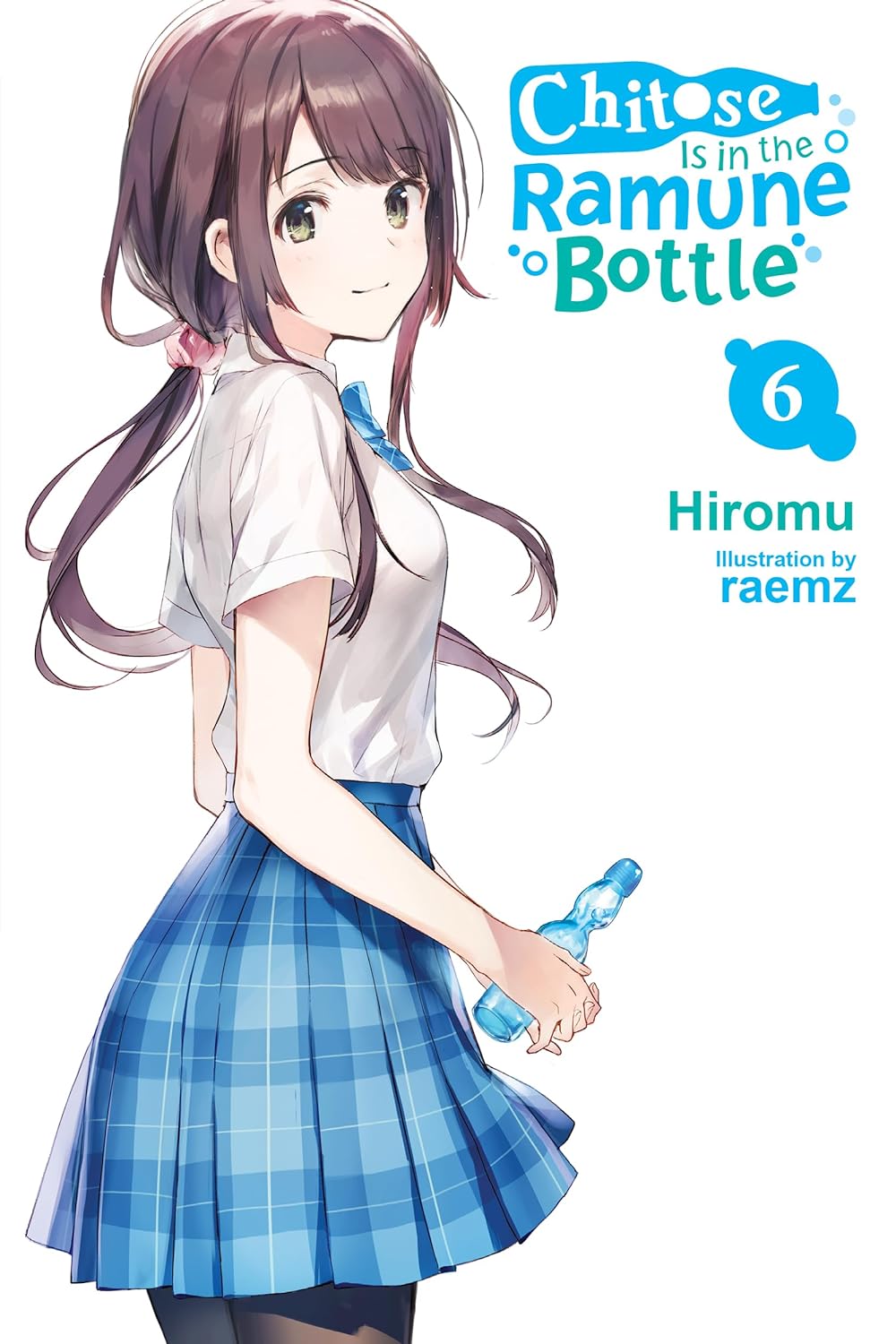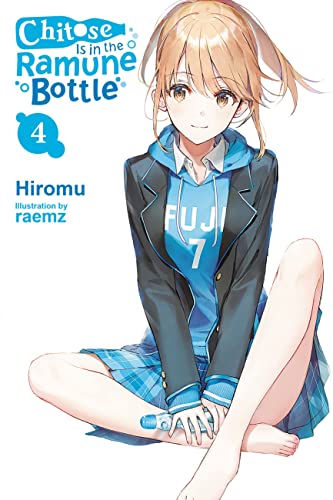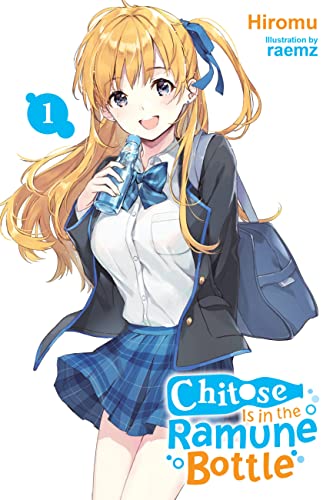By Hiromu and raemz. Released in Japan as “Chitose-kun wa Ramune Bin no Naka” by Gagaga Bunko. Released in North America by Yen On. Translated by Evie Lund.
It does sometimes occur to me that my reviews are, of course, telling you my own opinions, which frequently do not match up with the opinions of other light novel fans. So let’s get this out of the way fast: I really loved this book, and was on the edge of my seat reading it. This is despite the fact that I can easily see about ten different reasons why it would piss off most readers who are not me. First of all, it’s 406 pages of nothing but teenage angst. You had better be ready for people to be sobbing, hating themselves, and talking about how they can never get those cherished days back ever again, everything is RUINED FOREVER. The book consists almost entirely of conversations by high school kids all trying to sound adult, and would be excruciating animated. This is especially true of our cover girl, who is trying her best to be the Tsubasa Hanekawa of this series. As for Chitose, oh my God, you want to punch him. That last one, at least, is deliberate.
We all knew this would be “the Yua book”, and indeed it is, and that’s her on the cover. While everyone else stays with a devastated Yuuka, Yua goes to comfort a broken Chitose, going back to his apartment and making sure that he does things like eat, bathe, sleep, and all the other things he would not do on his own because he wants to wallow in self-hatred. As this happens, we flash back to the start of their first year of high school, when we meet a Yua who is very good at putting on a mask of “normal girl who does not get close to others”, which she rationalizes as not wanting to make trouble for her family. Unfortunately for her, Chitose sees through this immediately, and proceeds to needle her out of that mask every chance he gets. And boy, does she hate him.
Yua’s backstory is very good, and explains a lot about her, but the bulk of the good stuff is in the back half. Chitose gradually starts seeing all his friends (bar Yuuko and Kaito) one by one, and attempts to awkwardly get back to some sort of equilibrium. This is helped by it being summer break. But this isn’t going to work unless he can address the elephant in the room, and Yua (who is MVP here, but I fear is far too similar to Chitose to end up with him by the end of this series) manages to literally blackmail both Chitose and Yuuko to meet up and rip all the bandaids off. Chitose learns that he is not responsible for the romantic feelings of every girl who likes him. Yuuko learns that perhaps kicking everything apart just because she was still being treated like “the best girl” really *was* a dumb idea. And Yua herself is told to try to be a little selfish, and manages to, slightly , succeed.
The upshot of these 400 pages of howling teenage grief and angst is that we’re back to status quo, sort of, except Yuuko has, of course, still confessed. The author says this is the end of the first half of the series, so I assume we have 6 volumes to go…. after the inevitable short story collection, which is what’s coming next. In my top tier of romdrams, but YMMV.





